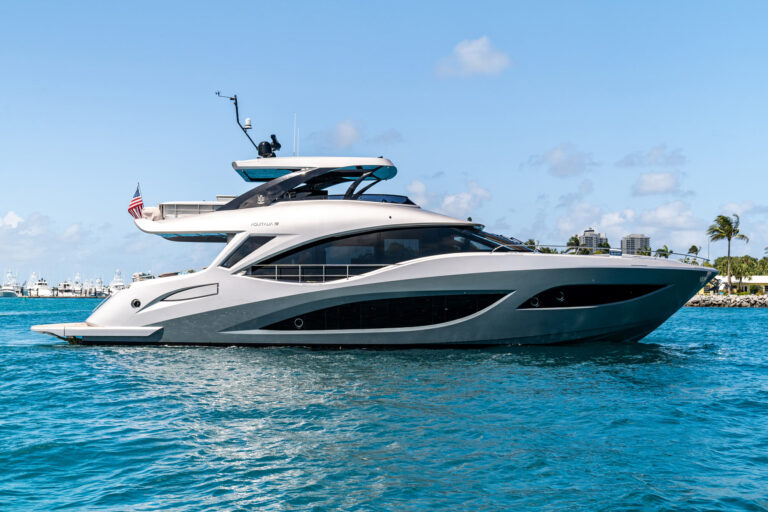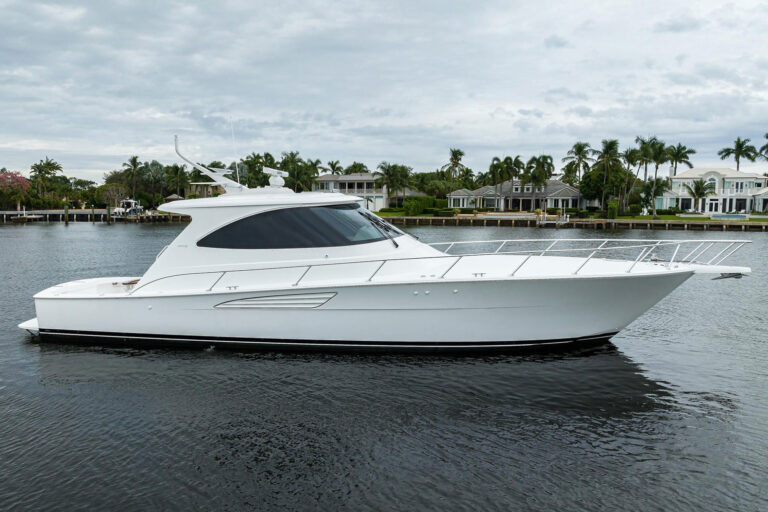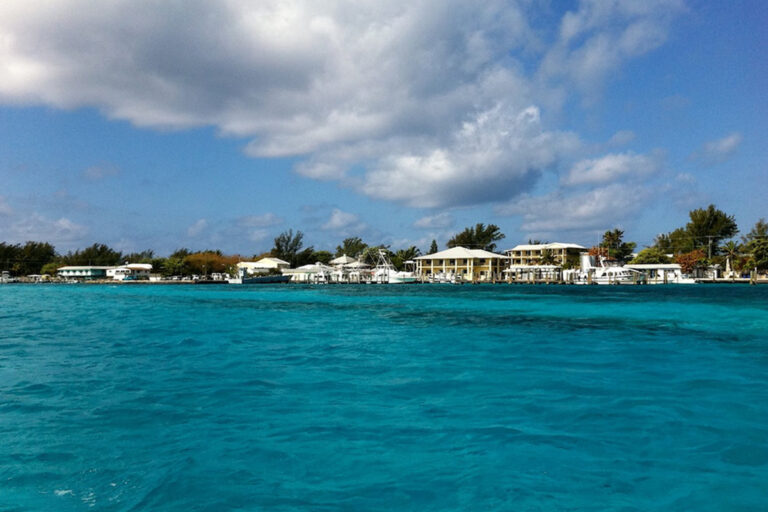
ytgaug09elect1525.jpg
Gizmo is not only crackerjack for testing marine electronics, but also for getting the rest of my work done. It’s productively peaceful here on my mooring, and the available WiFi and cell voice services are both excellent; if I didn’t brag about it, my colleagues and contacts might never know that I was simultaneously enjoying the harbor life. However, the gear and services that fulfill my e-mail and search needs change substantially when I shift just a quarter mile to catch a cooling breeze in the outer mooring field, and change again if I cross the bay for the seclusion of an island anchorage. And they’ll change yet again, getting ever more specialized and costly, if I want to be online offshore or while cruising foreign waters.
The big picture: If you want onboard Internet for work, pleasure, or actual boating-related information-or, like many of us, all of the above-2009 is a very good year. Thanks to the new satellite systems, most any size yacht can now get fairly fast Internet most anywhere, if at significant cost. And thanks to improving nonmarine mobile technologies, namely WiFi and cellular data, more and more nearshore boaters can get online reasonably well using just the devices and services they already take on the road. But for the areas in between, both in terms of location and budget, online strategies remain a confusing mélange of conventional and marine-specific possibilities. Let me explain with specifics.
Given the WiFi and cellular data rates at my mooring-mainly the 2,772kbps WiFi download speed on both PC and iPhone-it’s little wonder that I’m happy to pay $30 per month to the local firm that’s built high-quality access points (aka APs or hot spots) around the harbor. Heck, I can even take a Comedy Central/Jon Stewart break and watch HD TV via Hulu.com using just the low-powered WiFi radio built into my big-screen laptop. While AT&T only offers “Edge” cell data service here, rather than the company’s faster “3G,” downeast Maine was beyond the cell-data frontier just a few years ago. And Edge is far better than the best land-line modems we had a few years before that. I can check e-mails and weather radar quickly-and even manage blog comments-on the phone when I don’t feel like booting up the PC.
But boats are meant to move, and even a small shift disrupts my floating online nirvana. While I could use just the smartphone when beyond WiFi, that’s one way boat mobile reveals itself as very different from other forms. It’s silly to spend serious online time hunkered over a little handheld, as if I’m in a car, when my 37-foot mobile environment has ample power, a comfortable desk, and a fully accessorized PC. And thus begin the conundrums. I could, theoretically, hack the iPhone so that it “tethers,” i.e. lets the PC use its cellular Internet connection via USB or Bluetooth wireless. Or maybe AT&T and Apple will make tethering a legit option, as on BlackBerrys and other phone-service combinations.
Or I could take the route of many mobile boaters these days and purchase a simple cell-data-only card or dongle that plugs right into my PC. Aside from the general conundrum concerning which cell service offers the best coverage, speed, and value, and where, this setup could put me online along most of the East Coast without tinkering. But, mind you, there’s a reason that the iPhone and many other Internet phones also include WiFi. When available, it’s almost always faster, and often, as at my mooring, a lot faster.
That, and the fact that boats are big things that often lay just beyond the normal reach of WiFi access points, is why a niche industry has evolved to produce high-powered marine WiFi equipment (see “Widening WiFi” on page 122). I’ve used such gear to lock onto hot spots a mile away, but no form of mobile WiFi is tinker-free. You have to connect to a new AP wherever you stop, few subscription services cover more than a handful of harbors, and the days of waterfront residents who share their Internet connections freely are unfortunately waning. I think this is due to overly dire security concerns, and I encourage waterfront readers to examine those concerns skeptically.
There are also specialized antennae and amplifiers designed for boats that want to push the edges of normal cell data and voice range. Some can even retransmit amplified cell signals inside a yacht, so anyone aboard can benefit without cables. This technology is challenging though, and first-class gear and installers will help avoid disappointments. Leading manufacturers in marine cellular include Digital Antenna (www.digitalantenna.com), Shakespeare Marine (www.shakespeare-marine.com), and Marine Technologies (www.marinetechnologies.net).
Many serious cruising boats use both highpower WiFi and cellular equipment to get the most out of whatever shore-based connectivity is available. The next step, after all, involves satellites, and the choices become extreme. Portable satellite phones can be tethered to PCs, but pass data at glacial speed. Plus, until Globalstar replaces its ailing satellites or Inmarsat introduces its promised satphone, Iridium is the only satellite handset choice. But a tethered Iridium can handle e-mail, especially if used with software from OCENS (www.ocens.com) or GMN (www.globalmarinenet.net), and I recently found the new 9555 handset easier to use and better sounding.
There are other ways to get e-mail offshore, if that’s all the Internet you need. One is SkyMate (www.skymate.com), an easy-to-operate system that uses Orbcomm satellites and also offers off-boat monitoring. Another is the family of products, software, and services-many of them free- that make it possible to transmit data very slowly with a marine SSB radio; but if interested, you’d better start with a book, such as those from Cruising Companion Publications (www.idiyachts.com).
The other extreme is exemplified by those huge VSAT and Inmarsat domes that flower over megayacht fleets. Now smaller yachts can get much of the same broadband Internet goodness from the relatively tiny Iridium and KVH domes. I got an impressive call recently from a skipper who was beta testing the Skipper 150 (www.skippercommunications.com), whose performance should be similar to the KVH TracPhone FB150, and perhaps to Iridium’s OpenPort. His voice sounded natural, aside from the satellite delay, and he was browsing web pages and uploading a video to his blog simultaneously, all from his 40-foot boat about 100 miles off Long Island.
Staying connected on your boat has gotten a lot easier, but then again our growing Internet appetites are hard to sate. That beta tester, for instance, probably wouldn’t have been messing with big video files if he was actually paying the Fleet Broadband data rates. In fact, even many big-domed yachts have alternate WiFi and/or cellular Internet facilities in order to minimize costs when moored, and also for speed and redundancy. Making that all work together smoothly takes some tinkering.









